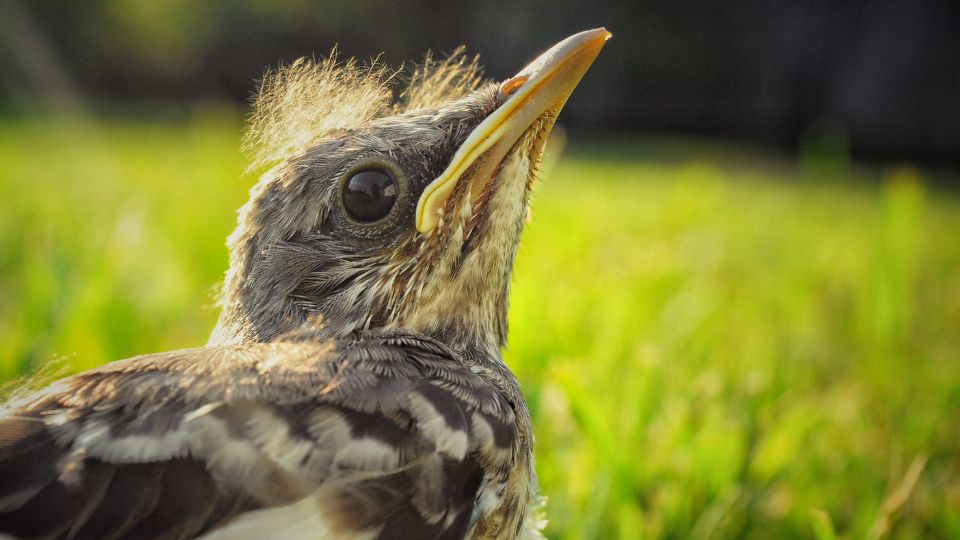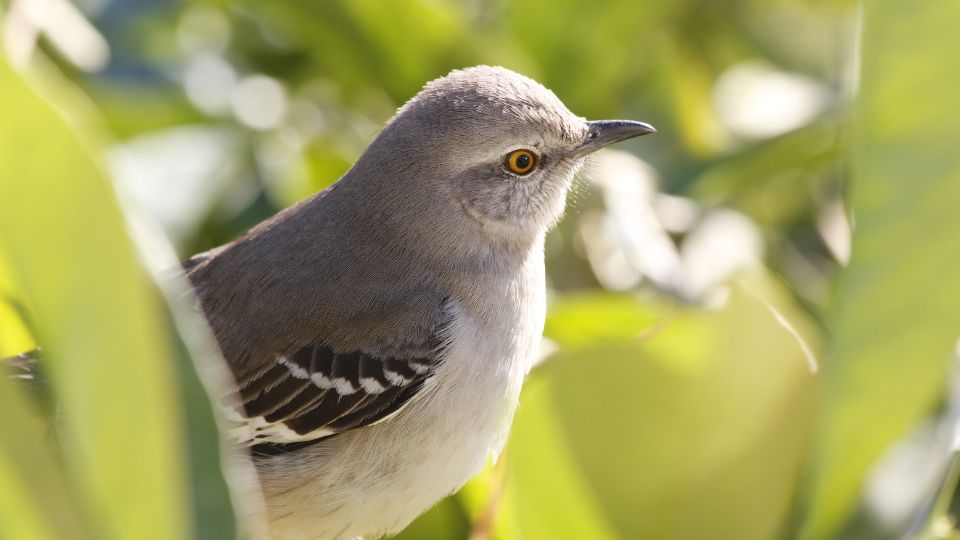If you find a baby Mockingbird on the ground, it could be a nestling that fell from its nest, or it could be injured. Before you act on helping the baby bird, you need to assess the situation to gauge whether the baby songbird needs your help.
Mockingbirds are consider Identifying whether it’s a nestling or fledgling is the first thing you need to consider. In most cases, the tiny baby bird is a recent fledgling that is learned the world with a parent close at hand.
However, if you find the baby bird is too young or injured, it may be time to intervene. What should you do if you find a baby Mockingbird needing a bit of help?
How to identify a baby Mockingbird?
Baby Mockingbirds have a similar coloring to adult Mockingbirds, but a few things help distinguish them from full-grown Mockingbirds.
- Bill size – If the bird’s bill seems too large for its head, it’s likely a juvenile. The size of the head, as well as surrounding feathers, haven’t grown in, which makes the size of the bill seem much too large for its head.
- Eye Size – Like the beak, baby Mockingbirds often have eyes that seem too large for their head. Sometimes, the eyes look to be building out of their head. It’s simply a matter of their head and feathers haven’t filled in yet, but it makes it much easier to spot young birds.
- Body Language – A baby Mockingbird isn’t as self-assured of their surroundings as adult Mockingbirds, and you can easily spot their unsure behaviors. Mockingbird chicks often flutter with their wings while chirping, and their flight patterns aren’t as confident as adult birds.

What to do if you find a Mockingbird on the ground?
If you find a baby Mockingbird on the ground, there are a few things that you must observe before getting involved.
- Check the bird of injuries. You can do this by observing the area and checking for signs that a storm blew down a nest or if the bird seems injured. If the bird appears injured, place it in a cardboard box in a safe place as it recovers. When you are not sure, you can also contact your located wildlife rehabilitator.
- Wait for parents while protecting it from predators. In most instances, the female or male Mockingbird will locate the rogue baby bird, take care of it, and feed it. In the meantime, try to keep a sharp eye on the baby bird and shoo away predators like Blue Jays or neighborhood cats.
- When accessible, place it back in its nest. The best thing you can do for this baby northern Mockingbird is gently put it back in its nest. Don’t worry about transferring your scent onto the bird- the mother will still take care of it even if it smells like your hands!
- Suppose you cannot locate the nest. If the parents don’t come and you can’t find the nest, you can take the baby bird inside to feed and care for it.
In the video below, we rounded up 10 of the most fascinating facts about Mockingbirds!
What to Feed a Baby Mockingbird
While in its nest, the female Mockingbird feeds hungry baby things like mealworms, caterpillars, and crickets. If you can’t find some bugs, don’t worry! Here are a few things you likely have around your housework in a pinch.
One of the best things you can feed a Mockingbird fledgling is cat food. Wet cat food is best, but you can also use dry cat food softened by soaking it in water overnight. You can also use things like baby food, mealworm suet cakes (crush up, of course), crushed bird seed, and bird food.
How To Feed a Baby Mockingbird
Don’t worry; you don’t need to prechew your fledglings’ food and spit it into their mouth! Buying a syringe to hand-feed your young bird is an absolute must.
It’ makes it much easier to ensure that you don’t overfeed your baby backyard bird, and the method of food delivery is very similar to how their parents feed them. Always ensure you soak dry food in water before loading it into the syringe.
This makes it much easier for young wild birds to digest. It’s also essential that the food is at room temperature. The best way to feed your wild bird is to soak birdseed or dry cat food in water overnight and load it into a syringe.

How Often Do I Need to Feed a Baby Mockingbird?
A young Mockingbird needs to eat once every hour. The baby Mockingbird lets you know when it is hungry when it opens its mouth. It’s important to note that underfeeding a wild baby bird is better than overfeeding one. It’s much better to skip meals here and there rather than feed them too much.
It’s also important to note that you can also ensure that your baby bird is hydrated by keeping their food soaked in enough water. Not only does soaking your food ensure that it is easier to swallow, but it also provides ample water.
Don’t Be Afraid to Call on the Experts
Caring for a baby bird is a full-time job, and it can be stressful to ensure that the baby songbird’s needs are met. Depending on the circumstances, a wildlife rehabilitation may walk you through how to handle an orphaned Mockingbird, or they make take injured birds in for rehabilitation.
When you find a baby bird, pause before you act. While a baby Mockingbird may seem exposed and defenseless, they might be new fledglings learning to navigate the world around them. Only act on helping a baby bird if it looks too young to be out of the nest (it doesn’t have full feathers yet) or seems injured.

